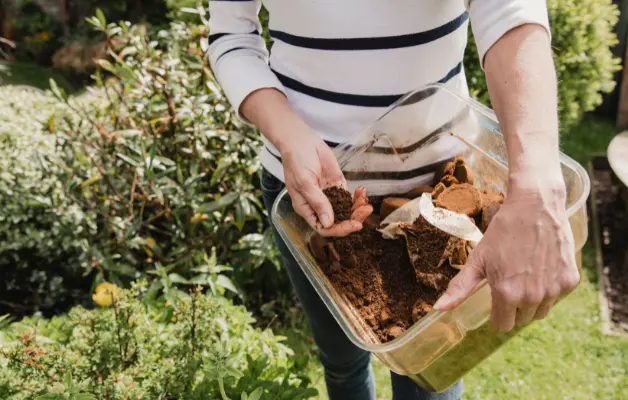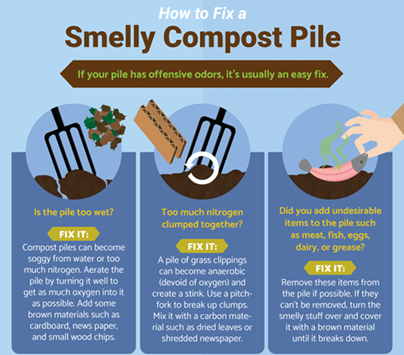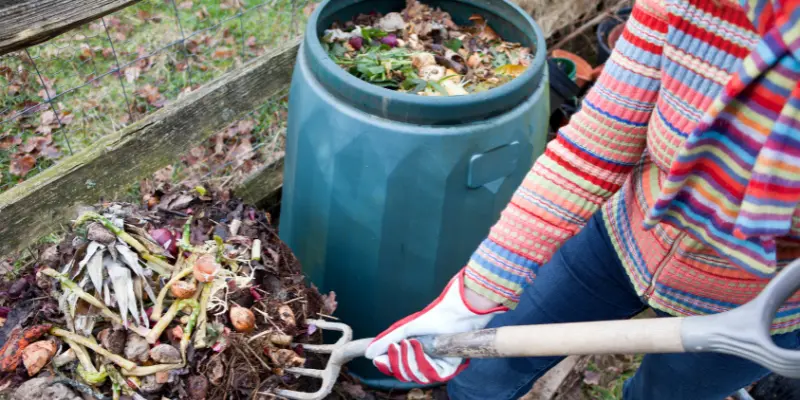How to Fix Soggy Compost? To fix soggy compost, place a loose-fitting lid or tarp over the pile and thoroughly turn and fluff it up. Soggy compost can be easily fixed by addressing the issue of excess moisture.
This can be caused by relentlessly wet weather or inadequate drainage in the compost pile. To remedy this, cover the pile with a lid or tarp to protect it from rain and turn the pile over to aerate and mix the materials.
Adding dry ingredients such as cardboard, shredded paper, or pea straw can also help absorb excess moisture and restore the proper balance. Additionally, ensuring a proper carbon-to-nitrogen ratio can prevent soggy compost.
Table of Contents
Causes Of Soggy Compost
When it comes to successful composting, achieving the right moisture balance is crucial. Too much water can lead to soggy compost, which can hinder the decomposition process and create an anaerobic environment. Here are the main causes of soggy compost:
Excess Moisture
Excessive moisture is one of the primary reasons for soggy compost. This can occur when you add too much water during the composting process or when the compost pile is consistently exposed to heavy rain or improper watering. The excessive moisture saturates the organic matter, preventing proper aeration and impeding the decomposing bacteria from thriving.
Inadequate Drainage
Inadequate drainage is another common cause of soggy compost. If your compost pile doesn’t have proper drainage, it can result in water accumulating at the bottom. This stagnant water creates a waterlogged environment, inhibiting oxygen flow and leading to soggy compost. Ensuring proper drainage is crucial for maintaining a healthy compost pile.
Heavy Rainfall
Heavy rainfall can be a temporary cause of soggy compost. When your compost pile is exposed to intense or prolonged periods of rainfall, it can become excessively wet. While rainwater is beneficial for composting, an excessive amount can tip the moisture balance and create soggy conditions. It’s important to monitor the weather and take appropriate measures to protect your compost pile during heavy rainfall.

Methods To Fix Soggy Compost
Soggy compost can be a common problem, especially during rainy seasons or if you’ve been overwatering your compost. Fortunately, there are several methods you can use to fix soggy compost and restore it to its optimal state. In this article, we will discuss three effective methods to fix soggy compost: adding dry materials, aerating the compost, and covering the pile. Let’s dive in!
Adding Dry Materials
One way to fix soggy compost is by adding dry materials that help improve drainage. Dry ingredients such as cardboard, shredded paper, or pea straw can help absorb excess moisture and create a well-balanced compost pile. Incorporate these dry materials by scattering them evenly throughout the compost pile. This will help create air pockets and allow the excess water to evaporate, restoring the proper moisture balance in your compost.
Aerating The Compost
Aeration is another effective method to fix soggy compost. When compost becomes too wet, it compacts and deprives the beneficial microorganisms of oxygen. By turning the pile over and mixing it thoroughly, you introduce oxygen and create a healthier environment for the decomposition process. Use a garden fork or a compost-turning tool to aerate the compost pile, ensuring that all parts of the pile are well-mixed. This will help stimulate decomposition and speed up the drying process of your compost.
Covering The Pile
If relentless wet weather is the cause of your soggy compost, covering the pile can provide protection and prevent excess moisture. Use a loose-fitting lid or tarp to cover your compost pile, allowing proper ventilation while shielding it from excessive rainfall. This will help maintain the ideal moisture level and prevent further waterlogging. Remember to remove the cover during dry spells to allow moisture to evaporate, ensuring a balanced composting environment.
By implementing these methods, you can easily fix soggy compost and restore its optimal conditions for decomposition. Remember to monitor the moisture level of your compost regularly and make adjustments as needed. With proper care and attention, you can achieve healthy, nutrient-rich compost that will benefit your plants and garden.

Credit: twitter.com
Preventative Measures For Soggy Compost
Having a properly balanced compost pile is essential for successful decomposition. One common issue that can hinder the composting process is when the compost becomes too wet. A soggy compost pile can lead to unpleasant odors, slow decomposition, and the growth of mold and harmful bacteria. To prevent your compost from becoming too wet, consider implementing the following preventative measures:
Proper Layering
One effective way to prevent a soggy compost pile is by ensuring proper layering of materials. This means alternating between nitrogen-rich green materials such as kitchen scraps and grass clippings, and carbon-rich brown materials such as dry leaves or shredded newspaper. The ideal ratio for the layers is approximately 3 parts brown material to 1 part green material. This balance helps to maintain the moisture level in the compost pile.
Regular Turning
Regularly turning the compost pile is another crucial step in preventing it from becoming too wet. Turning the pile every few weeks helps to aerate it, allowing moisture to evaporate and ensuring proper decomposition. By mixing the materials, you encourage the breakdown of organic matter and prevent the formation of dense, waterlogged areas within the pile.
Rainwater Management
During periods of heavy rainfall, it’s important to manage the amount of water that enters your compost pile. Excess rainwater can quickly saturate the pile and lead to excessive moisture. To prevent this, consider covering the pile with a loose-fitting lid or tarp during rainy seasons. This will help to shield the pile from excessive water and maintain a balanced moisture level.
If you find that your compost pile has already become too wet, there are corrective measures you can take. Consider adding dry ingredients such as cardboard, shredded paper, or pea straw to absorb excess moisture. Mix these materials thoroughly into the pile to improve drainage and promote a healthier composting environment.
Frequently Asked Questions For Compost Too Wet How To Fix Soggy Compost
How Do You Fix Soggy Compost?
To fix soggy compost, place a loose-fitting lid or tarp over the pile to protect it from the rain. Turn the pile over and fluff it up thoroughly. Add dry ingredients such as cardboard, shredded paper, or pea straw to soak up excess moisture.
Keep the compost moist but not wet.
How Do You Save Sludgy Compost?
If your compost is too wet and sludgy, you can fix it by adding dry ingredients like shredded paper or cardboard. Mix them thoroughly into the compost to help it break down properly. If the problem is due to wet weather, place a loose-fitting lid or tarp over the pile and turn it over to fluff it up.
How Do You Revive Dry Compost?
To revive dry compost, add water to moisten it and mix in brown and green carbon and nitrogen source materials. Aim for a ratio of three parts carbon material to one part nitrogen. This will help restore moisture and activate the composting process.
How Do You Moisten Dry Compost?
To moisten dry compost, add cold water and gradually introduce nitrogen-rich items like grass cuttings and kitchen peelings. This helps maintain moisture levels. Additionally, you can mix in dry ingredients such as cardboard, shredded paper, or pea straw to fix excessively wet compost.
Turn the pile over and fluff it up thoroughly to improve aeration.
Conclusion
To fix soggy compost, there are simple and effective solutions. If the problem is due to wet weather, cover the pile with a loose-fitting lid or tarp. Additionally, make sure to turn the pile over and fluff it up thoroughly.
If the compost is too wet, adding dry ingredients like shredded paper or cardboard can help. By following these steps, you can revitalize your compost and create nutrient-rich soil for your plants.


![Terrifying Trend: Why Do Roosters Chase Humans? [2024]](https://plantsandchickens.com/wp-content/uploads/2024/02/why-do-roosters-chase-humans-4.webp)


Leave a Reply